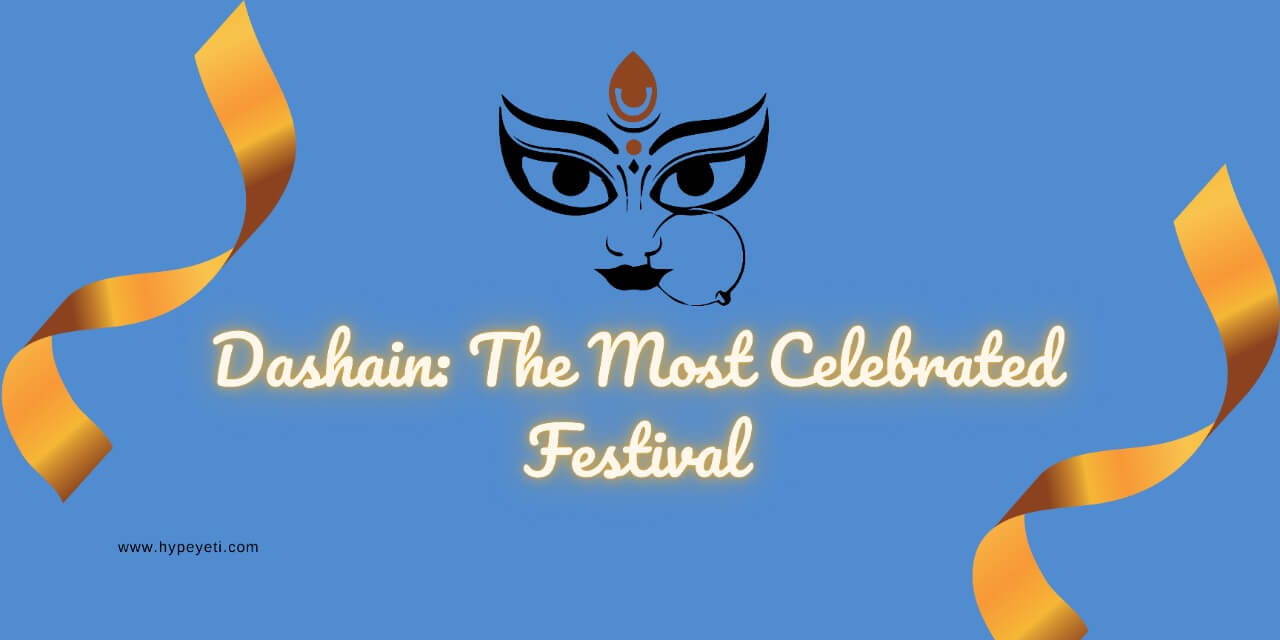Dashain, Nepal’s big harvest festival, is a time for family reunions, the exchanging of gifts and blessings, and elaborate pujas. Dashain celebrates the Goddess Durga, who was created from the shakti or spirit of all the gods and was armed with weapons from each of them.
Dashain represents the triumph of good over evil. Some of the key activities of Dashain include kite flying, temple worship, playing cards, buying new clothing, family reunions, receiving blessings from elders, cleaning the surroundings, painting the home, and so on.
Dashain is a 15-day festival that takes place in September and October. The most significant days among the fifteen days are the first, seventh, eighth, ninth, and tenth.
Significant Days of Dashain Festival
#1. Ghatasthapana
The first day of the Dashain celebration is known as Ghatasthapana. It is also one of the most important days of the Dashain festival, which is used to worship Goddess Duga. The event is named from two words: “Ghata” and “sthapana.” Ghata means “pot or vessel,” and sthapana means “to establish.”
Ghatasthapana refers to the placement of a kalasha or pool, which represents the goddess Durga. The Kalash is filled with holy water and sewn with barley seeds on this day. The Kalash is then placed in the center of a rectangular sand block. This entire process is performed at an auspicious hour decided by astrologers.
#2. Phulpati
Phulpati is an important festival held on the seventh day of Dashain. The flower is phool, while leaves and plants are pati. Fulpati is a Sanskrit word that signifies “flowers, leaves, and plants.”
On this day, Goddess Durga is honored with nine different forms of Phulpati (petals of flowers).
As a result, on this day, people bring nine various varieties of phulpati into their houses to welcome Dashain in the hope that the Goddess will enter and bless them with happiness, prosperity, and health. The day symbolizes the victory of truth over lies and spirituality over fear.
#3. Maha Asthami
The eighth day of Vijayadashami is known as Maha Asthami, and it is the longest and most awaited celebration among Nepalese Hindus. Durga Bhawani and Kali mata (various names and avatars) are faithfully adored.
This is the day when the deadliest form of Goddess Durga emerges to the bloodthirsty Kali and is tamed in temples around the country by the sacrifice of buffaloes, goats, chickens, and ducks. Some Hindu followers fast on Asthami.
On the day of Maha Durga Ashtami, nine tiny pots are collected and all nine forms of Goddess Durga are worshiped in order to worship the Goddess. On this day, all nine forms of Goddess Durga are worshiped.
#4. Maha Navami
The ninth day of the Navratri celebration, Mahanavami, also known as Durga Navami, is regarded as extremely auspicious in the Hindu religion.
Maha Navami means “the glorious ninth day.” Maha Navami symbolizes the victory of good over evil because it remembers the day when the goddess Durga defeated the buffalo monster.
On this day, Lord Vishvakarman, the god of creation, is worshiped in the hope of making the things we use joyful and successful.
#5. Dashami
Dashain’s tenth day is known as Bijaya Dashami. On this day, Elders place Tika (a mixture of yogurt, rice, and red color planted in the Ghatasthapanaon) on the foreheads of younger relatives to bless them with abundance and to grow bigger and more prosperous in the following years.
On this day, most families who have been apart for a long time reunite and celebrate with joy.
Note: The Nepal Calendar Determination Committee, Nepal’s approved organization for determining dates and times for Hindu festivals, has ruled that the auspicious hour to receive Dashain tika this year is 11:51 a.m. (5 October).



